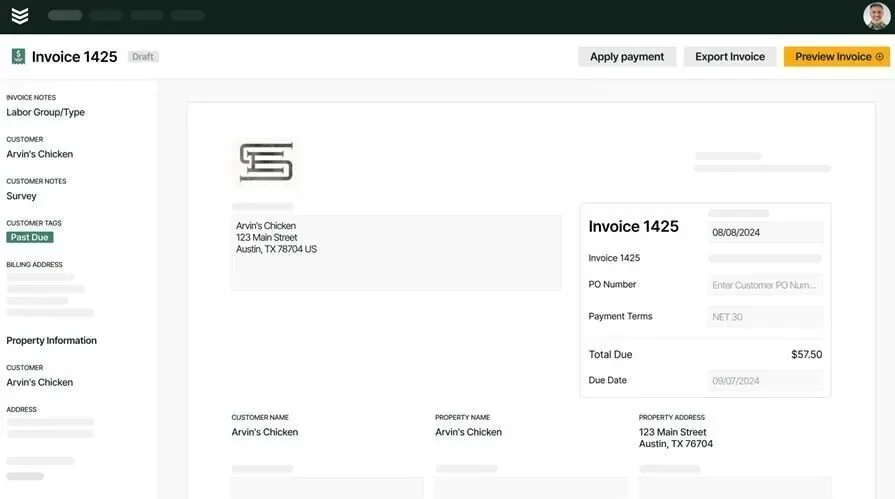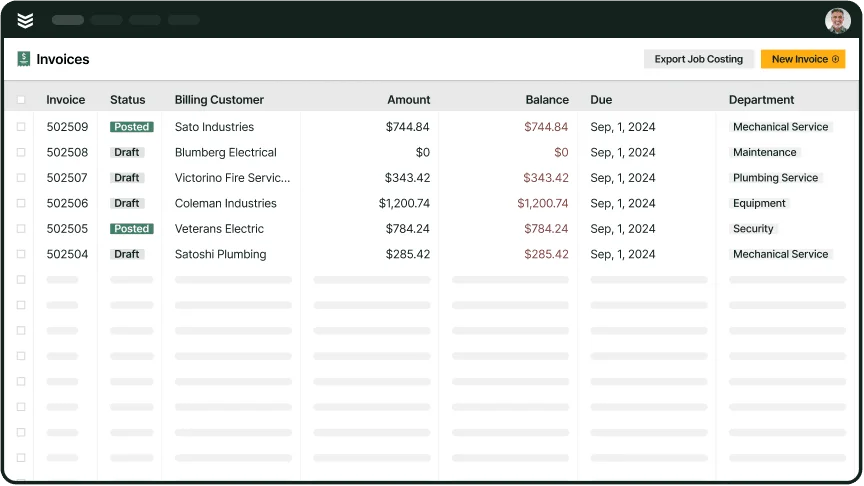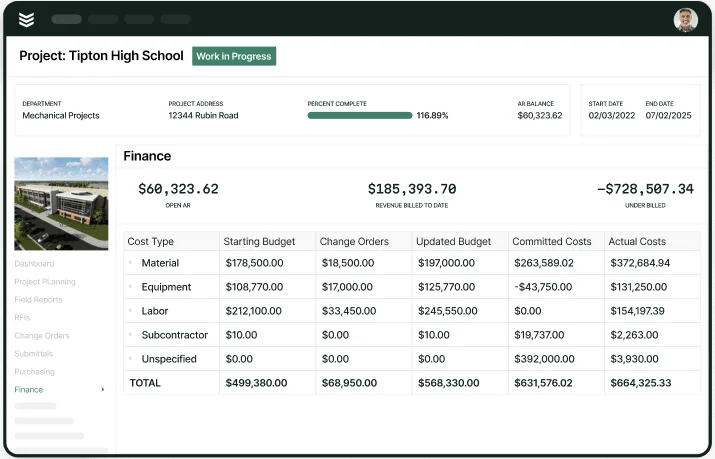You’re closing out jobs, chasing parts, fielding customer calls—and then there’s the billing. If your crew runs jobs in one system and your accounting lives in QuickBooks, it’s easy for details to fall through the cracks. That’s where HVAC software designed to connect with QuickBooks makes a difference. It links what’s happening in the field with what needs to hit the books—automatically. No more bouncing between spreadsheets, scribbled notes, and your accounting team asking, “Where’s this invoice from?”
Want to dig deeper into how field service software can tighten your operations across the board? Check out our full guide to field service management. In this guide, we’ll break down how QuickBooks-compatible HVAC software keeps your service business tight, fast, and on the money. Here’s what we’ll cover:
- Why QuickBooks compatibility matters for HVAC businesses
- 7 real-world benefits of syncing your HVAC software with QuickBooks
- Top 6 HVAC software options that work with QuickBooks
- How to choose HVAC software that fits your business and accounting setup
Next up—we’ll look at why QuickBooks compatibility isn’t just nice to have. For HVAC businesses juggling jobs and numbers, it’s essential.
Why QuickBooks HVAC software compatibility matters for businesses
QuickBooks keeps your numbers in check. But if your job details, service history, and invoices live somewhere else, you’ve got gaps—and those gaps cost time and money.
Think about it: your techs finish a job, and someone back at the office has to re-enter hours, materials, and customer info into QuickBooks. That’s extra work. And every extra step means delays, errors, or worse—missed revenue.
When your HVAC software syncs directly with QuickBooks, everything flows in real time. Invoices get pushed from the job site straight into accounting. Payments get logged without the follow-up call. Job costs show up in the books without someone digging through notes. That connection gives you cleaner books, faster billing, and fewer headaches across the board.
It also means less time toggling between platforms. Techs stay focused on service. Office staff stays focused on cash flow. And you’ve got full visibility—without chasing paperwork.
Up next—we’ll break down the biggest benefits of using HVAC software that syncs with QuickBooks. These aren’t just “nice to haves.” They’re what keep your jobs profitable and your books accurate.

Invoicing Toolkit for Commercial Contractors
Learn how to sync your HVAC service payments cycle from end-to-end.
7 real-world benefits of syncing your HVAC service software with QuickBooks
QuickBooks keeps your books in order—but it wasn’t built to manage what happens in the field. And if your service software doesn’t talk to it, someone’s stuck stitching the two together. That’s where things get messy: delays, missed payments, double entry, and errors that eat into your margins. Connecting your HVAC software directly to QuickBooks doesn’t just clean up your accounting—it helps every part of the business run smoother. Here’s how that integration pays off where it matters most.
1. Invoices go out faster
The longer you wait to invoice, the less likely you are to get paid on time. But when your software syncs with QuickBooks, your team can create and send invoices right from the job site. No more bringing notes back to the office. No more hoping someone remembers to enter it into QuickBooks later.
Technicians finish a job, log it, and the invoice hits your books instantly. That’s not just convenient—it’s profitable. Companies that invoice within 24 to 48 hours of job completion are 5x more likely to get paid on time. Wait a week, and your chances of late payment almost double. Fast billing also improves customer experience. Clients get their invoice while the job is still fresh in their minds—no confusion, no follow-up calls.
2. Payments get tracked in real time
Whether a customer pays by check, card, or mobile app, that payment can be logged on-site and synced directly into QuickBooks. No more chasing down who paid what or waiting days for office staff to update the books. Real-time payment tracking tightens cash flow. It gives your office team up-to-the-minute insight into what’s been collected and what’s outstanding.
That visibility helps with everything from forecasting to collections. Plus, when your service and accounting systems talk to each other, you can easily tie every payment back to the job, customer, and technician—no guessing games.
3. Job costs sync without guesswork
Labor, parts, travel—every cost tied to a job should land in your accounting system without needing manual input. With the right HVAC software integrated into QuickBooks, that’s exactly what happens. Job cost syncing gives you accurate margins, better forecasting, and fewer surprises at tax time. Instead of chasing down part receipts or guessing at labor costs, you’ve got everything documented—automatically.
It also helps you spot which jobs are profitable and which ones are draining your budget. That kind of insight is key if you want to tighten your estimates or tweak pricing. We break down how this kind of financial visibility drives smarter decisions in our guide to the current state of the field service market.
4. Time tracking flows into payroll
Your techs’ hours shouldn’t live on a clipboard or in someone’s email inbox. When time tracking is part of your HVAC software—and that software talks to QuickBooks—those hours flow straight into payroll. That means fewer mistakes, less double entry, and more time for your office team to focus on higher-value work. It also reduces the chance of disputes. Hours are tracked in real time, tied to specific jobs, and logged automatically.
This becomes especially important for larger teams or contractors juggling multiple crews. When you’ve got 20+ techs in the field, manual payroll just doesn’t cut it anymore.
5. Reporting is based on real numbers
If your reporting relies on outdated or incomplete data, you’re flying blind. But when HVAC software and QuickBooks are synced, your reports reflect reality. You’ll see your real revenue, real expenses, and real margins—all updated as jobs are completed. That kind of clarity helps you spot trends, cut waste, and plan better for seasonal swings or slow periods. Field service management solutions with strong accounting integration give you that clarity without the extra admin work.
6. Fewer errors from manual entry
Every time someone retypes job details into QuickBooks, there’s a chance something gets missed. Wrong numbers, duplicate records, missing parts—it all adds up to messy books and more cleanup later. With automated syncing, those errors disappear. Job details are captured once and pushed through your system with no middle steps. That means your books stay accurate, and your office spends less time chasing down discrepancies. Less admin, fewer mistakes, cleaner data. Simple as that.
7. A tighter back office
Your techs shouldn’t have to babysit paperwork, and your office staff shouldn’t spend half their day reconciling numbers from two different systems. When your HVAC software integrates with QuickBooks, everything flows together. Schedules, job tickets, invoices, payments—it’s all connected. That means less time organizing, more time executing.
And when things run smoother behind the scenes, customers notice. Faster billing, better communication, and fewer dropped balls add up to a better service experience. Many of the core benefits of field service management only show up when your back office isn’t stuck doing the heavy lifting.

BuildOps Invoicing tools for HVAC
Ensure accurate job costing through automated invoices synced with Quickbooks.
Top 6 options for HVAC software compatible with QuickBooks
Plenty of HVAC platforms claim to work with QuickBooks—but dig deeper and you'll find half-baked integrations, clunky exports, or missing features that leave you doing the heavy lifting. We’ve rounded up six HVAC software tools that actually deliver when it comes to syncing with QuickBooks. From job costing and payroll to invoicing and service history, these picks help you stay organized, bill faster, and keep every dollar accounted for.
1. Best for commercial: BuildOps
BuildOps is a full-scale field service management platform tailored for commercial contractors, particularly in industries like HVAC, plumbing, and electrical. Unlike residential-focused FSM tools, BuildOps streamlines complex job management with real-time scheduling, dispatching, and financial tracking—all while integrating directly with QuickBooks. This ensures that job costs, invoices, and payments are automatically recorded without manual entry, reducing administrative workload and improving financial accuracy.
How pricing works: BuildOps operates on a custom pricing model based on company size, required features, and the number of users. Pricing is structured as a per-user, per-month fee with enterprise-level options available.
Features beyond invoicing:
- Advanced job costing and profitability tracking synced with QuickBooks
- Smart scheduling and dispatching to optimize technician efficiency
- Custom workflows designed for large-scale commercial service businesses
- Asset and equipment tracking for preventive maintenance contracts
What sets it apart for commercial: BuildOps is built specifically for commercial contractors who need more than just basic invoicing and scheduling. It offers deep QuickBooks integration to keep accounting in sync with field operations, while also handling complex commercial workflows like service contracts, large-scale job tracking, and multi-location management.

Quickbooks + BuildOps
Stop chasing paperwork after every call and see how we keep HVAC invoicing on track.
2. Best for residential HVAC: Housecall Pro
Image Source: Housecall Pro
Housecall Pro is geared toward residential HVAC businesses that want a simple way to manage scheduling, billing, and customer communication. It’s user-friendly, mobile-ready, and offers a clean sync with QuickBooks to track invoices, payments, and basic job details automatically. It’s great for smaller teams that handle routine service calls, installs, and homeowner maintenance. That said, it may fall short for commercial contractors who need advanced job costing, asset tracking, or long-term service contract features.
How pricing works: Housecall Pro uses a tiered subscription model, with monthly pricing that scales based on features and number of users. Premium tiers unlock marketing tools, proposals, and advanced automation.
Features beyond invoicing:
- Online booking and customer text updates
- Mobile app with real-time technician tracking
- Paperless quotes and digital payments linked to QuickBooks
- Automated maintenance reminders for recurring service
What sets it apart for residential HVAC: Housecall Pro simplifies day-to-day operations for small HVAC shops. It keeps field and office teams in sync without a steep learning curve, and its QuickBooks integration makes it easy to stay organized—even if you’re juggling dozens of homeowners a week.
3. Best for small businesses: Kickserv
Image Source: Kickserv
Kickserv is designed for small HVAC businesses and independent contractors who need an all-in-one system without the complexity. It handles job scheduling, customer management, and invoicing from one platform—and it syncs directly with QuickBooks to help you stay on top of payments and expenses. However, Kickserv’s QuickBooks integration is relatively basic and may not support complex job costing, payroll automation, or larger-scale workflows.
How pricing works: Kickserv offers a free plan for solo users, with tiered monthly pricing for growing teams. Higher tiers include more advanced reporting, custom fields, and automation tools.
Features beyond invoicing:
- Built-in CRM for managing leads and repeat customers
- Mobile app for field updates and job notes
- Recurring job scheduling for maintenance contracts
What sets it apart for small HVAC shops: Kickserv offers powerful features for teams that don’t need enterprise-level tools. It helps HVAC businesses run smoother without requiring heavy onboarding or expensive upgrades—and its QuickBooks sync keeps billing in check.
4. Best for fast-growing teams: FieldEdge
Image Source: FieldEdge
FieldEdge is built for HVAC service businesses that are growing fast and need their field and office operations to keep up. It offers real-time scheduling, customer history, time tracking, and QuickBooks integration—helping you track costs, send invoices, and monitor profitability without double entry. That said, while FieldEdge handles the essentials well, it may not offer the depth of reporting or workflow customization that larger commercial teams need as they scale.
How pricing works: FieldEdge offers custom pricing based on team size and features. Plans are built around user count and tool access, with onboarding and support included.
Features beyond invoicing:
- Service agreement tracking and automated renewals
- Tech performance dashboards with profitability insights
- Field time tracking linked directly to payroll
- Centralized customer history for repeat service
What sets it apart for fast-growing HVAC teams: FieldEdge helps teams stay organized during growth spurts. From the first job to the final invoice, the platform connects everything with QuickBooks to reduce admin time and keep service teams focused on work.
5. Best for flexibility and automation: Zoho
Image Source: Zoho
Zoho is a flexible platform that helps HVAC companies manage jobs, quotes, scheduling, and financials—all while integrating with QuickBooks for bookkeeping. It’s great for teams looking to automate repeat tasks and manage customer relationships alongside their service work. However, Zoho’s QuickBooks integration may require extra configuration, and some advanced financial tools may need add-ons or custom setups.
How pricing works: Zoho offers subscription-based pricing, with multiple app bundles and feature tiers. Monthly and annual billing options are available, and users can mix and match Zoho products based on their needs.
Features beyond invoicing:
- Built-in CRM and job quoting
- AI tools for automation and smart reminders
- Mobile access for techs and managers in the field
- Custom dashboards for performance and revenue
What sets it apart for HVAC automation: Zoho makes it easier to handle high volumes of service calls without losing track of data. With smart tools and QuickBooks integration, it keeps admin work low and visibility high.
6. Best for financial tracking: Field Promax
Image Source: Field Promax
Field Promax is a service software that puts extra focus on the financial side of your HVAC operation. It tracks job costs, logs technician time, and feeds everything into QuickBooks automatically—so you know what you’re spending and what you’re bringing in, in real time. Still, while it offers strong financial tools, Field Promax may not match the dispatch or scheduling flexibility of other platforms built specifically for HVAC.
How pricing works: Field Promax uses a per-user pricing model, with monthly subscription plans that scale by team size and feature access.
Features beyond invoicing:
- Work order tracking linked to QuickBooks
- Recurring job management and automated reminders
- Time logs integrated into payroll and costing
- Visual dashboards for job performance and revenue
What sets it apart for financial oversight: Field Promax gives HVAC owners full visibility into where the money’s going—down to each job, part, and labor hour. It ties the field to QuickBooks without friction, keeping your books current and accurate.
How to choose an HVAC software compatible with Quickbooks that fits your accounting needs
Plenty of HVAC platforms say they connect with QuickBooks. But once you dig in, some only cover surface-level billing. Others force your team into extra steps that drain time and energy. If you're serious about cutting down admin work and keeping your numbers locked in, here’s what to look for:
- Integration coverage – Does it connect invoices, labor, materials, and payments—or just the basics?
- Built for HVAC – Is the software tailored to the kind of work your techs actually do—dispatching, repairs, installs, and service agreements?
- Learning curve – Can your techs and office team pick it up fast, or will it slow things down?
- Level of automation – Does it handle data for you in the background, or are you still cleaning things up later?
- Scalability – Can it keep up as your crew grows and job volume ramps up?
Choosing HVAC software that connects well with QuickBooks should simplify things across the board. Up next, we’ll walk through how BuildOps ties everything together—so your field work, office workflow, and accounting stay in sync.
Deep Dive
If you want to learn more actionable best practices you can start with today to improve your HVAC invoicing process, check out our in-depth guide to field service invoicing.
When your HVAC software and QuickBooks are in sync, the whole business runs cleaner—from the first service call to the final payment. You cut out the busywork, keep your books accurate, and give your team fewer reasons to second-guess the numbers. But getting there takes more than just checking a box for “QuickBooks integration.” You need a tool that fits how HVAC teams actually work—dispatching, tracking, quoting, servicing—and one that connects those jobs directly to your financials without extra steps.
Whether you’re managing a residential crew or overseeing commercial service contracts, the software you choose should work the way your team does. And for commercial contractors who need end-to-end visibility across operations and accounting, platforms like BuildOps can bring everything under one roof.

Demo our Quickbooks integration
See how the platform connects field service and accounting for HVAC.





